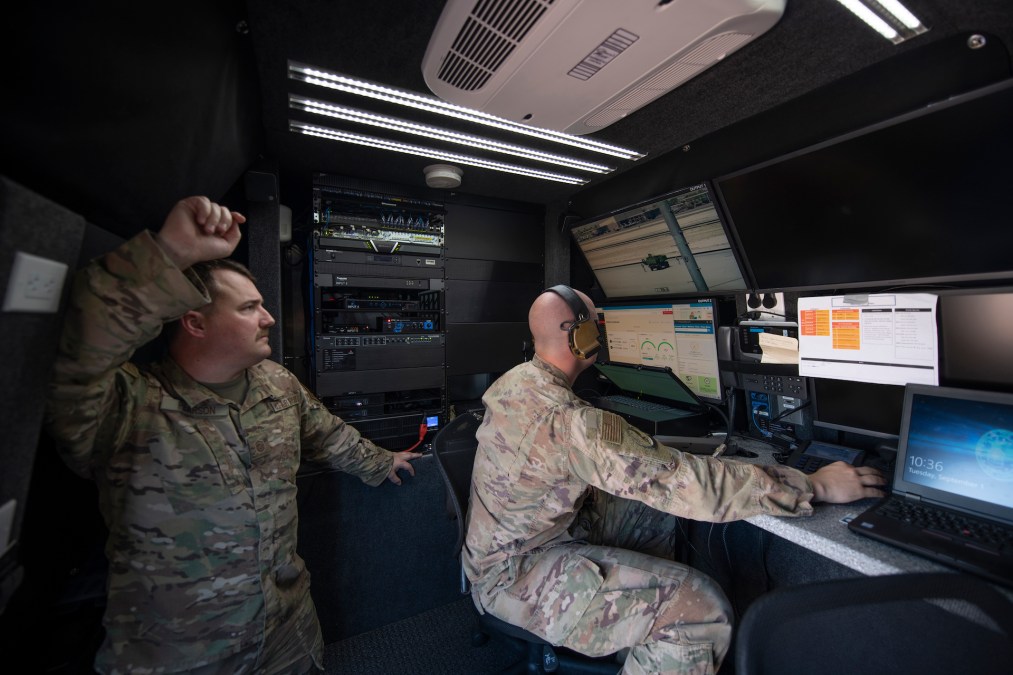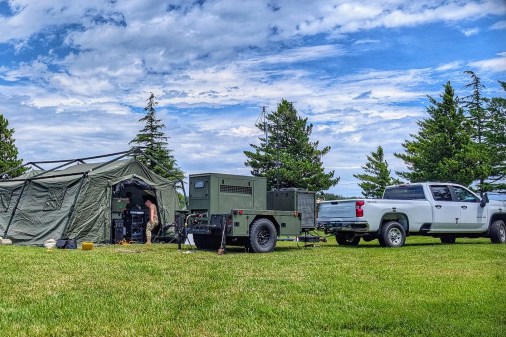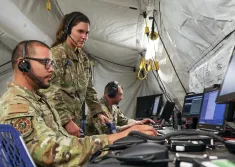For C2 modernization, Air Force moving away from ‘big bang acquisition’

The Department of the Air Force needs to take a more agile and intermittent approach to acquiring and integrating capabilities for the department’s command, control, communications and battle management (C3BM) enterprise, according to Brig. Gen. Luke Cropsey, the integrating program executive officer in charge of the effort.
“I think what we’re trying to do is find ways of actually promoting more competition — not less competition — as we’re moving forward,” Cropsey said Monday during an event hosted by the Air and Space Forces Association. “We’re thinking very deliberately around how we create conditions for deploying capability continuously. What does that look like? How do you do it? How do we get out of big bang acquisition?”
The C3BM enterprise is part of the DAF Battle Network, which is the Air and Space Forces’ contribution to the Pentagon-wide effort to better connect the military’s sensors, shooters and networks under a warfighting construct known as Joint All-Domain Command and Control (JADC2).
Under a recent reorganization of the entire initiative, the C3BM enterprise now also includes the Advanced Battle Management System (ABMS), which is developing the digital infrastructure for the effort.
Cropsey noted that many of the technologies that he’s looking at for C3BM are already being developed within the commercial industry, rather than the Air Force’s own research-and-development centers. Because of this, the services needs to shift to an acquisition model for C3BM that allows them to rapidly, incrementally and continuously acquire the latest technologies available.
“How that looks and the way that we do that, I think, starts to look more like thin-slicing the problem as opposed to just shoving it all over into a winner-takes-all kind of environment,” Cropsey said. “That model is something that we’ve got to go out and prove, quite frankly. That isn’t something that I’d say we’ve got a ton of experience in, historically, making work and make happen.”
In recent months, the Air Force has been ramping up engagement with industry for its C3BM initiatives — particularly the ABMS digital infrastructure efforts. The service has already shared with industry some top-secret level insight of “war plans” for how ABMS will be employed, and has set up the ABMS digital infrastructure consortium with industry, among other efforts.
When it comes to ABMS and its other JADC2-related projects, the Air Force is currently interested in leveraging unique capabilities from industry that can be integrated into the whole system, Cropsey said. But that acquisition strategy won’t be the only option forever, he added.
“There’s going to be different sets of opportunities moving forward, and I think as we start building a backlog around the specific programmatic elements that we need for filling in holes or building out the scale and the capabilities in the future … there will be more and more opportunities for platform-specific or subsystem-unique kinds of things that might go onto particular platforms or otherwise,” Cropsey said.






